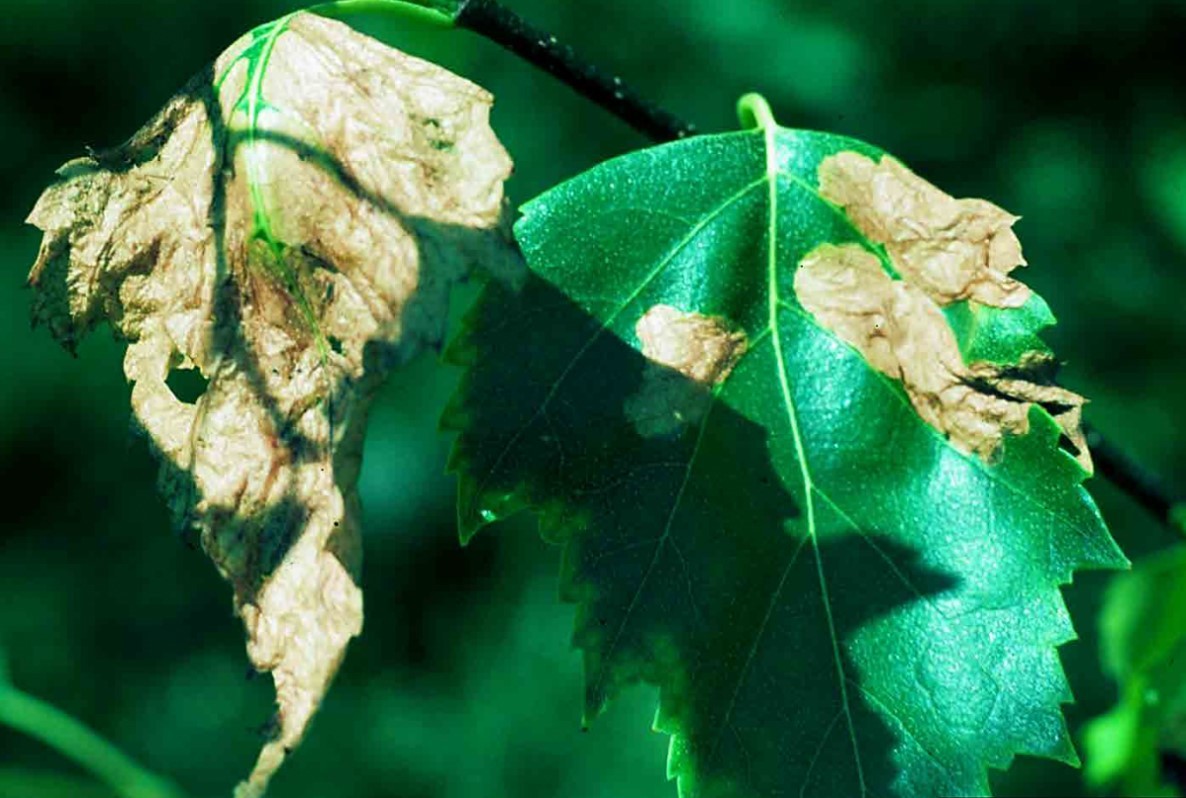Leaf miners belong to the order Diptera and form the family Agromyzidae. This is a family of small flies whose larvae tunnel into the leaves of plants, creating ‘mines’.
Mining of the leaf tissue may cause desiccation (drying), browning and premature defoliation. In certain cases, the leaves may become thin, papery and translucent and the two leaf surfaces can be peeled apart.
Adult leaf miners can be moths, beetles, or flies, and the tunnelling patterns of their larvae vary depending on the nature of the insect. For example, an aspen serpentine leaf miner creates winding or meandering tunnels whereas a birch leaf miner creates large blotches. Serpentine miners are also known to attack herbaceous perennials , For most deciduous ornamentals, leaf mining has a negative effect on appearance rather than on plant health.
Adult leaf miners can also cause severe damage to the foliage. Basswood adult leaf miners are beetles that will begin feeding on the upper leaf surface, skeletonizing the leaf tissue. When infestations are severe, entire leaves may appear skeletonized as the tissues dry up. Dead tissue may remain in place but mined leaved usually dry, shrivel and drop off the branch prematurely. Repeated severe infestations will reduce plant health and growth rate and on occasion, can kill a tree
Sign and Symptoms
In certain cases, the leaves may become thin, papery and translucent and the two leaf surfaces can be peeled apart. When examined closely, black pellets can be seen within the tunnels as a result of faecal deposition.
Prevention
Sanitizing
- Many species of leaf miners overwinter in fallen leaves and soil beneath the host plant.
- Doing a fall cleanup can be beneficial in reducing these overwintering sites.
Control - What you need an arborist to do
Pesticide
- The birch leaf miner can be controlled by injecting a systemic insecticide (Treeazin) which works by transporting throughout the plant internally and is eaten by the insect.
- Contact insecticides will not effectively control leaf miners, as the larvae feed within the leaf interior.
- There is no effective control for poplar or aspen leaf miners. Infected leaves should be removed and discarded and pruning may be required in the event of a heavy infestation.


Tree Health Issues
Wondering about costs?

